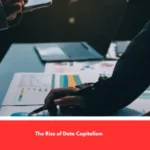UBI and the Automation Economy. One of the most talked-about cybersecurity technology trends this year is AI (artificial intelligence). The idea behind AI in cybersecurity is to use AI-enabled software to humanize the experience by detecting zero-day malware, APTs, malware-free attacks, or scans in the background, all at a lower incident cost to the organization. Thanks to recent advances in computing power and cloud processing, AI in cybersecurity is becoming more of a reality, no longer requiring large, high-end server architectures with expensive graphics cards on the client side.
Cybersecurity firms are increasingly relying on AI to leverage more traditional tools such as antivirus protection, data loss protection, fraud detection, identity and access management, intrusion detection, risk management, and many other critical security areas. This intelligence would give cybersecurity teams a significant advantage in automatically preventing new attacks and stopping breaches before they occur. Both will help protect companies’ data and reduce their IT costs.
The Impact of AI on the Labor Market

In fact, according to IBM Security’s Cost of Data Breach Report 2023, AI and automation have the greatest impact on the speed at which organizations identify and stop intrusions. Companies with extensive AI and automation implementations had a shorter data breach lifecycle of 38 days compared to companies studied that had not deployed these technologies: 214 days versus 322 days. Time is the new currency in cybersecurity, whether defending or attacking.”As the report reveals, early detection and rapid reaction can greatly minimize the damage caused by a breach.
Security forces must focus on where adversaries are most planning and concentrate their efforts on stopping them before they can achieve their objectives. Critically, they invest in analyzing suspected threats and responding rapidly to accelerate the speed and resilience of defenders AI and self-driving cars as important as balancing this. IBM’s article on the cost of a data breach in security 2023 According to IBM’s own 2023 report, companies that fully implemented AI and security.
Universal Basic Income in a Post-AGI World

Automation had (compared to those that failed to implement) breach lifecycles 108 days shorter on average and perceived significantly lower incident costs. Companies with a high use of AI in security and automation had the smallest savings. With a data breach of $3.60 million, they made a difference of $1.76 million less, representing a 39.3% smaller difference than those without any type of automation. But the economic magnitude of cybersecurity is not limited to the reduction in incident costs; more than 20 CISOs and CIOs, on average, and PMO security analysts, on average, allocate between 20% and 30% of their total.
It is estimated that the global cyber workforce has now reached 4.7 million workers, and the average global salary can be accepted at around $80,000. Therefore, the average global expenditure on cyber personnel is $374 billion. Given that 30% (the CIOs’ recommendation was 20-40% of the automated human resource management system used in the CF Spread Template) of this time-consuming workflow is available, this potentially saves $112 billion in costs per year.
Legislative Actions and Budget Allocations

What research specialists expect in this regard is that cybersecurity providers will achieve between 10% and 50% of these fixed savings over time. Calculating the average (30%), banking firm Morgan Stanley estimates that the Total Addressable Market (TAM) for AI-powered cybersecurity solutions is $34 billion. In the US, AI-powered cybersecurity solutions still require cybersecurity experts to observe and activate them. However, IBM reports from 2023 indicate that only a third of the breaches studied were identified by the companies’ own internal security teams.
This figure demonstrates the lack of cybersecurity talent, which represents a major new opportunity for security services managers who benefit from automation and AI to architect and execute sustainable security services. Cybersecurity is a very complex and constantly evolving topic. The danger of technological unemployment is dying because it remains a taboo due to the uncertainty surrounding new job creation. Those of us who are talented in new machines have the ability to recognize patterns of jobs at risk, but the patterns of opportunity or new jobs that will occur are uncertain.
Conclusion

We have to guess by comparing the status of workers with those of (efficient) gluttons, and more often than not, this tips the scales to establish negative estimates of net job losses. But we have ample evidence of human ingenuity in inventing jobs. As Keynes wrote, the preponderance of the economy in Britain and the United States is around 40% of all workers in the servile sector. Sectors such as health and general care and the tourism and hospitality industry were small. Today, each of them has more customers than the industrial sector.
As John F. Kennedy said, If there are men who have the talent to find new machines that, by robbing man of his work, make him stiffen his body if there are men who have the talent to face the blows of industry with a melancholy face, weakened and without hope, we have the capacity to create jobs for workers again. The challenge that all new technologies entail is not that they create only a few jobs, but that so few workers have the skills to fill them. Just as some jobs may gain with new technologies, but others disappear, we too are designing jobs and skills that, just as technology advances.





